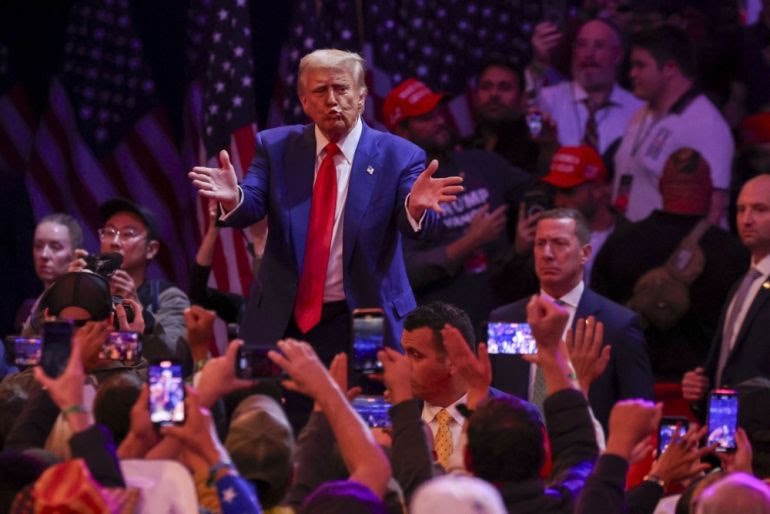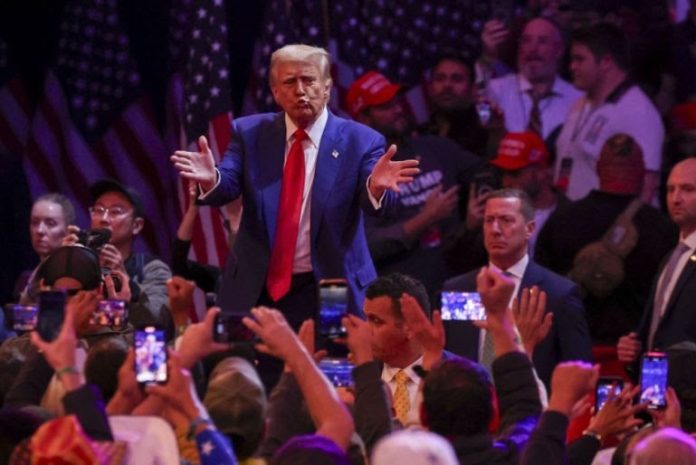As President-elect Donald Trump prepares for his return to the White House in January 2025, the early days of his transition are filled with critical appointments, policy announcements, and strategic planning. Winning the presidency in 2024 against incumbent Joe Biden, Trump and his team are moving swiftly to lay the groundwork for what promises to be an administration that doubles down on core themes from his previous term: economic nationalism, immigration reform, and federal restructuring.
Appointments Shaping the Administration
A central figure in Trump’s transition team is Susie Wiles, a long-time strategist and key campaign aide who played a vital role in the victory. Known for her deep connections within Florida politics and as a Washington outsider, Wiles is expected to help Trump appoint officials aligned with his policy goals and vision. Reports indicate Trump is particularly focused on appointing figures with experience in conservative governance and those who can work with Congress on fast-tracking his agenda.
Another anticipated appointment is Representative Elise Stefanik, a prominent Republican from New York, whom Trump is considering for a top administration role. As one of the more vocal supporters of Trump’s policies, Stefanik’s presence in the administration would solidify Trump’s influence within the GOP and appeal to conservative and moderate Republicans alike. Trump’s decisions on other high-profile positions, such as the head of the Justice Department, the Department of Defense, and various cabinet-level appointments, are expected to reflect a preference for loyalists with a strong commitment to his “America First” policies.
Policy and Federal Workforce Restructuring

Trump’s approach to restructuring the federal workforce is a central focus, signaling a potential shake-up in government staffing practices. He has emphasized reducing the size of the federal government, consolidating certain agencies, and making changes to streamline operations.
For example, Trump’s campaign hinted at a reduction of “bureaucratic bloat” in agencies such as the Department of Education and the Environmental Protection Agency. The goal is to create a leaner government that, according to Trump’s team, will be more efficient and more responsive to conservative policy directives.
Economic and Foreign Policy Outlook
On the economic front, Trump’s administration is expected to continue its previous stance on tariffs, particularly concerning trade relationships with China. Trump advisers have already been in discussions with Congress about reintroducing tariffs on Chinese goods, with the argument that such measures will protect American industries and jobs. Trump’s trade policies are likely to reflect his commitment to boosting domestic manufacturing and reducing the country’s reliance on foreign imports.
On foreign policy, Trump has voiced plans to reconsider the United States’ involvement in international agreements, particularly in areas related to climate change and defense. Trump’s previous skepticism toward NATO and the UN could see a re-emphasis on bilateral agreements over multilateral pacts, with the intent of advancing what he calls “fair deals” for America. Additionally, he has hinted at reshaping U.S. involvement in global climate initiatives, viewing them as economically burdensome for the U.S..
Challenges and Public Reaction
While Trump’s base is energized by his return to the presidency, challenges lie ahead. Trump’s focus on restructuring the federal government may face pushback from unions and advocacy groups concerned about job security and regulatory rollbacks. Additionally, Trump’s policies on immigration and trade are likely to face opposition from Democrats in Congress, setting the stage for contentious legislative battles.
Public opinion on Trump’s transition and upcoming policies is mixed. Supporters argue that his return represents a chance to correct what they view as excessive regulation and to strengthen national security. Critics, however, express concerns about the potential impact on federal employment, international relations, and environmental protections. Trump’s administration will need to navigate these issues carefully to ensure policy implementation without alienating key demographics or igniting public backlash.
As the transition continues, Trump’s initial appointments and policy outlines provide a glimpse into his administration’s priorities and the direction he hopes to take the country. The coming weeks will be crucial as Trump fills his cabinet and charts his path forward, setting the stage for a presidency that aims to redefine America’s role domestically and internationally.



